The Best Overhead Drum Mics 2023 - Matched Pairs
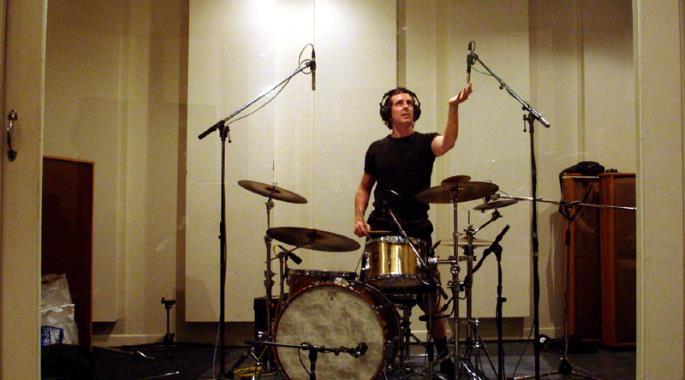
Author & Contributors
Raphael Pulgar
I've been an audio engineer for 20 years specializing in rock and metal recordings. I also play guitar and produce original music for my band and other content creators.
Under $500
sE Electronics sE7
Cons
- Not good at capturing deep bass
Pros
- High SPL handling
- Good clarity and transparent sound
- Crisp sound but not too trebly
- Versatile, great value buy for home studios
The sE Electronics sE7 is a back-electret small diaphragm condenser microphone designed with versatility in mind. It features a transformerless design and class-A circuitry.
The matched pair makes it great for recording stereo sound sources as overhead, room or binaural mics. It can also be used on drum shells thanks to high SPL handling and built in pad.
Transparency is its best trait, it captures sound sources and ambience without altering the sound. Cymbals sound crisp but not too bright. If your cymbals border more on the bright side, the more natural sound of the sE7 will be a lifesaver when you start mixing the raw tracks recorded with it.
Aside from being one of the better budget overhead drum mics, this also makes the sE7 a good versatile studio mic that can work with other acoustic instruments. Its high SPL handling expands its use to miking up loud speaker cabinets. It can also be used for field recordings thanks to its compact size. Speaking of size, being a small condenser mic means that it doesn't capture deep bass as much as large condenser mics would.
Given all that it can do, the sE7 really is a good value "desert island" mic, definitely worth considering.
Specifications
- Type: Condenser
- Polar Pattern: Cardioid
- Frequency Response: 136dB SPL, 156dB (with pad)
- Sensitivity: 19mV/Pa (-34.5dBV)
- Maximum SPL: 136dB SPL, 156dB (with pad)
- Dynamic Range: 121 dB
- Equivalent Noise Level: 16 dB(A)
- Power Requirements: 48V Phantom Power
- Connection Material: Not specified
- Weight: 0.28 lbs.
- Extras: Microphone Clip and Wind Screen
| Website | Source | *Rating Value |
| YouTube | Real Home Recording 2 | 96/100 |
Frequency Response and Polar Pattern

Lauten Audio LA120
Cons
- Requires a bit of a learning curve
Pros
- Interchangeable pressure-gradient capsules
- Built-in HF and LF filters
- Accurate audio capture
- Versatile application
The Lauten Audio LA120 is a premium small diaphragm FET condenser microphone with interchangeable pressure-gradient capsules. This feature lets each capsule be properly tweaked instead of making compromises with one capsule.
The LA120's transformerless design helps it accurately capture sound while preserving dynamics. And this makes it viable for use with other instruments, including articulate ones like acoustic guitars.
Switches on the side of the mics enable low and high cut filters for more versatility. Piercing cymbal highs can be filtered out easily with the built in high cut filters which make it a great choice for modern rock recordings that use a lot of bright and fast crash cymbals.
Its small size also enables easier placement especially in more complicated drum setups. The versatility of the capsules plus the available filters makes it ideal for spaced pair, XY, and ORTF stereo mic techniques not just for overheads but for acoustic guitar, ambient mics and more. On the flipside, utilizing the filters will require a bit of practice, which can be an issue when used by novices.
If you want a premium level mic pair without a spending stratospheric amount, the Lauten Audio LA120 is a a great pick. It is also a good all-around mic, which experience technicians can put to good use.
Specifications
- Type: Condenser
- Polar Pattern: Cardioid, Omni (switchable capsules)
- Frequency Response: 20Hz-20kHz
- Sensitivity: -34.0dB re 1 Volt/Pascal (20.00mV @ 94 dB SPL) +/- 2 dB @ 1kHz
- Impedance: 200 ohms
- Maximum SPL: 130 dB SPL (@0.5%)
- Dynamic Range: 121 dB
- Equivalent Noise Level: <15dB (A weighted)
- Power Requirements: 48V Phantom Power
- Connection Material: Not specified
- Weight: 2.8oz (80g)
- Extras: Wooden Case, Windscreens
| Website | Source | *Rating Value |
| TapeOp | Allen Farmelo | 96/100 |
| Gearspace | Will_Warren | 100/100 |
| Higher Hz | Brandon Schock | 80/100 |
Polar Pattern

Frequency Response

Under $1000
sE Electronics sE8
Cons
- Steep learning curve
Pros
- Wide dynamic range
- Low noise with selectable pads and filters
- Accurate and balanced sound, good stereo placement
- Viable for use with other instruments
"Huge sound" is usually achieved from giving as much dynamic range as possible to a given element. And that is exactly what the sE8 is for, a small mic with a wide dynamic range that you don't normally see in a small diaphragm "pencil" condenser mic.
This wider dynamic range allows it to better capture sonic details and dynamic nuances, which expands the use of this pair from overheads to being a good multi-instrument mic.
Its low noise design enables it to be used on quieter, more nuanced sound sources while its high headroom with two selectable pads gives you leeway to mic even the most aggressive drummer without compressing or distorting at the circuitry level. Two low cut filters effectively reduce stage noise, or if you want to reduce the capture of the kick drum on the overheads. These features make them work well as room mics, useful for accentuating natural snare reverb in the room, resulting in more authentic sounding drums in the mix. The downside to all these control options is steeper learning curve, but learning how to use them will reward you greatly.
These pairs are individually matched in their factory for best stereo imaging and best phase correlation. This results in accurate and balanced stereo placement between shells and cymbals without losing the upper end sheen due to phase issues. This also makes the pair well suited for ORTF ambient recordings. Two low cut filters effectively reduce stage noise, or if you want to reduce the capture of the kick drum on the overheads.
The sE Electronics sE8 is a well-loved stereo pair that never disappoints. It competes with mic pairs costing higher than itself. sE does a very good job at matching their mics in house so if you're looking for a consistent matched pair for stereo recordings, the sE8 is it.
Specifications
- Type: Condenser
- Polar Pattern: Cardioid
- Frequency Response: 20 to 20000 Hz
- Sensitivity: 25 mV/Pa (-32 dBV)
- Impedance: 110 ohms
- Maximum SPL: 139 / 149 / 159 dBSPL (0/10/20 dB pad) (0.5% THD @ 1kHz)
- Dynamic Range: 121 dB
- Equivalent Noise Level: 13dB (A weighted)
- Power Requirements: 48V phantom power
- Connection Material: Gold-plated XLR connector
- Weight: 4.97 oz.
- Extras: Mic clips, windscreens, stereo bar, and metal storage case
| Website | Source | *Rating Value |
| Sound On Sound | Paul White | 92/100 |
| Mixonline | Kevin Becka | 94/100 |
| Gearspace | roughgear | 96/100 |
Polar Pattern and Frequency Response
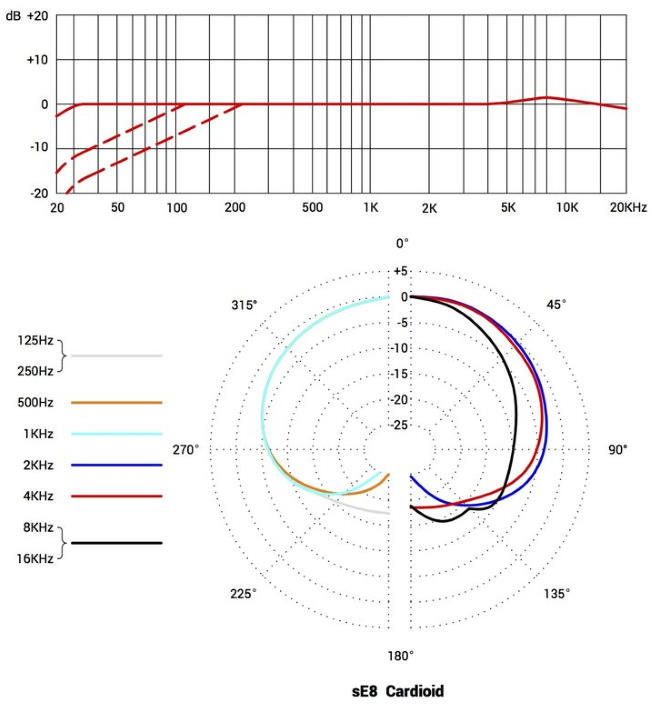
Beyerdynamic MC 930 Stereo Set Small-Diaphragm Cardioid Condenser
Cons
- Above the common home studio budget
Pros
- Easy to position (Cardioid polar pattern)
- Built-in -15db attenuation and bass roll off
- Great for cymbals, instruments and even vocals
- Premium look, build and sound quality
Like many of the mics here, the Beyerdynamic MC 930 is engineered with versatility in mind, following the tried and tested formula of combining a small diaphragm condenser capsule with high SPL handling features.
Beyerdynamic chose to equip this mic with the familiar cardioid polar pickup pattern, which makes it easy to work with. This is complemented by the built-in pad that provides 15dB attenuation, and bass roll-off filter for taming the excess lows.
It does an excellent job as overhead drum microphones with its innate transparent sound. And it also works well with other instruments, including vocals. It also has an aesthetic quality that screams premium, and rightly so given its high price tag.
Some retailers are shipping the MC 9300 with two shock mounts, two windscreens, and a carrying case, all of which add to its overall value and longevity.
While it does require a pretty hefty investment, those who own the Beyerdynamic MC 930 say that it is well worth the cost. It definitely wows clients both aesthetically and sonically.
Specifications
- Type: Condenser
- Polar Pattern: Cardioid
- Frequency Response: 40 to 20000 Hz
- Sensitivity: 30 mV/Pa (-30.5 dBV)
- Impedance: 180 ohms, load impedance 1000 ohms
- Maximum SPL: 135 / 140 dB SPL (0 / -15 dB Pad) @ 1 kHz
- Dynamic Range: Not specified
- Equivalent Noise Level: 16dB (A weighted)
- Power Requirements: 11V to 52V Phantom Power
- Connection Material: Not specified
- Weight: 4oz (115g)
- Extras:Carrying Case, Mic Clips, Wind Screens, Low cut filter (switchable, 6 dB/octave at 250 Hz), Pad ( -15 dB)
| Website | Source | *Rating Value |
| Gearspace | turk sanchez | 94/100 |
| Recording Hacks | Matthew McGlynn | 90/100 |
Polar Pattern

Frequency Response
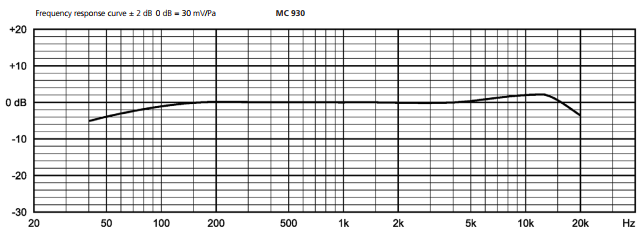
Things to Consider When Buying Overhead Microphones
Why You Want Matched Microphones When Recording Stereo
Mismatched microphones in stereo may result in what is known as "comb filtering" where notches in the frequency response occur due to conflicting distance, diaphragm type, transient response and other factors. These will result in stereo recordings that are uneasy to listen to and is known to cause nausea for some people.
For a more in-depth look at this topic read this article at Sound On Sound.
Mic Versatility
What You Need To Know About SPL Rating
Understanding dB Pads
Overhead Mic Positioning
Best Overhead Drum Mic Selection Methodology
The first edition was published in 2017.
For this edition we looked at all the matched pairs of microphones that are being sold by major music gear retailers with a street price of $1,000 or less. We ended up with an initial shortlist of 19 promising options for detailed analysis. We then collected the most current feedback and ratings from online retailers, music gear publications, discussion forums, videos and review publications. Over 13,900 rating sources were then processed using the Gearank Algorithm to produce a rating score out of 100 for each set of mics. Finally we selected the highest rated options to recommend above. For more information about our methods please read How Gearank Works.
About the Author and Contributors
Here are the key people and sources involved in this guide's production - click on linked names for information about their music industry backgrounds.
Lead Author & Researcher
Raphael Pulgar
I've been an audio engineer for 20 years specializing in rock and metal recordings. I also play guitar and produce original music for my band and other content creators.
Some of the recording gear I use in my studio includes the Focusrite Scarlett 18i20, Focusrite Scarlett Solo, Samson QH4 Headphone Amp and Cloudlifter CL-1. My mics include Aston Origin, Aston Element, Shure SM57, Rode NT1, Rode PodMic and MXL V67G.
Contributors
Alexander Briones: Supplemental writing.
Jason Horton: Editing and Illustrating.
Media
Main/Top Image: Photograph by chrisjtse and reproduced here under a Creative Commons CC BY-ND 2.0 license.
The individual product images were sourced from websites, promotional materials or supporting documentation provided by their respective manufacturers.



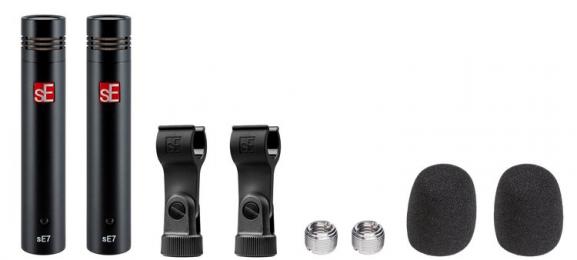
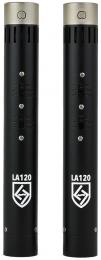
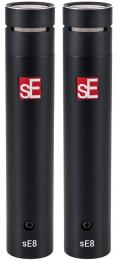
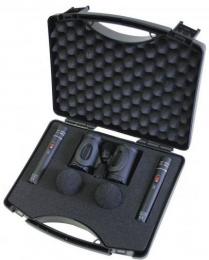
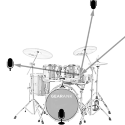
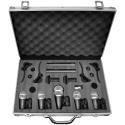
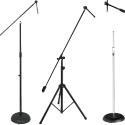
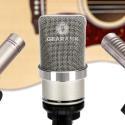
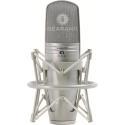
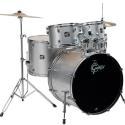
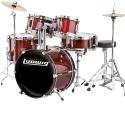
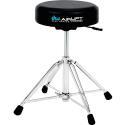
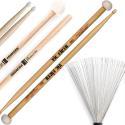
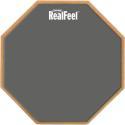





Comments
The following mic pairs came
Submitted by Jason Horton on
The following mic pairs came off the recommended list when we published our November 2022 Edition:
We have removed the AKG C214
Submitted by Jason Horton on
We have removed the AKG C214 Stereo Pair due to a price increase that put it above the $1000 price limit for this guide.
Hello!
Submitted by Oleg (not verified) on
Hello!
I recently started broadcasting my bell ringing concerts using RODE NT5 microphones. Sound pressure at the bell tower is 115-120 dB.
You can listen to the first results here - https://youtu.be/1o3veTiE3yI - broadcast and no post-processing. The video from the laptop's camera is rather poor, but the sound is quite decent.
The recorder used was a Focusrite Scarlett 18i8.
Publication of our June 2021
Submitted by Jason Horton on
Publication of our June 2021 Edition resulted in the following pairs coming off the recommended list above, but you can still see our analysis of them:
''Another cool feature of
Submitted by Adam Nesbitt (not verified) on
''Another cool feature of this mic is its high-pass filter, which can tame excessive high frequencies''
This is not what a HPF does.
Hi Adam,
Submitted by Raphael Pulgar on
Hi Adam,
Thanks for catching that. We have edited the article to amend the factual error.
-Raphael
Your 3 SDPC-2 F plots are all
Submitted by Anon (not verified) on
Your 3 SDPC-2 F plots are all for omni.
Good day,
Submitted by Raphael Pulgar on
Good day,
I'm glad you noticed the frequency chart. The Frequency charts are from second page of the unit's official manual at manualslib.com
It may be an error in part of the author of the technical manual though for information's sake, we chose to include the charts on our guide.
-Raphael
As a result of our June 2020
Submitted by Jason Horton on
As a result of our June 2020 update the following came off the recommended list above: Shure KSM137 Stereo Matched Pair.
Hey there!
Submitted by Stefan (not verified) on
Hey there!
Great recommendations, I was actually looking into the Rode M5 at some point. However, the Samson C02 pair seems to be what I'll be going with.
Why has it been removed from the list, is there something wrong with them?
Also, how do you create your frequency-response/polar patter graphics? Do you use some kind of software?
I'd be really interested in making some of my own!
Thanks in advance.
- Stefan
Hi Stefan,
Submitted by Jason Horton on
Hi Stefan,
There's nothing wrong with the Samson mics, they only came off the recommended list because there were more highly rated options when we updated the guide, but only by a small amount in the case of the Samson C02 Stereo Pair.
The frequency response charts were created by the mic manufacturers.
Cheers,
Jason.
As a result of our December
Submitted by Jason Horton on
As a result of our December 2018 update, the following mic pairs came off our recommended list above: